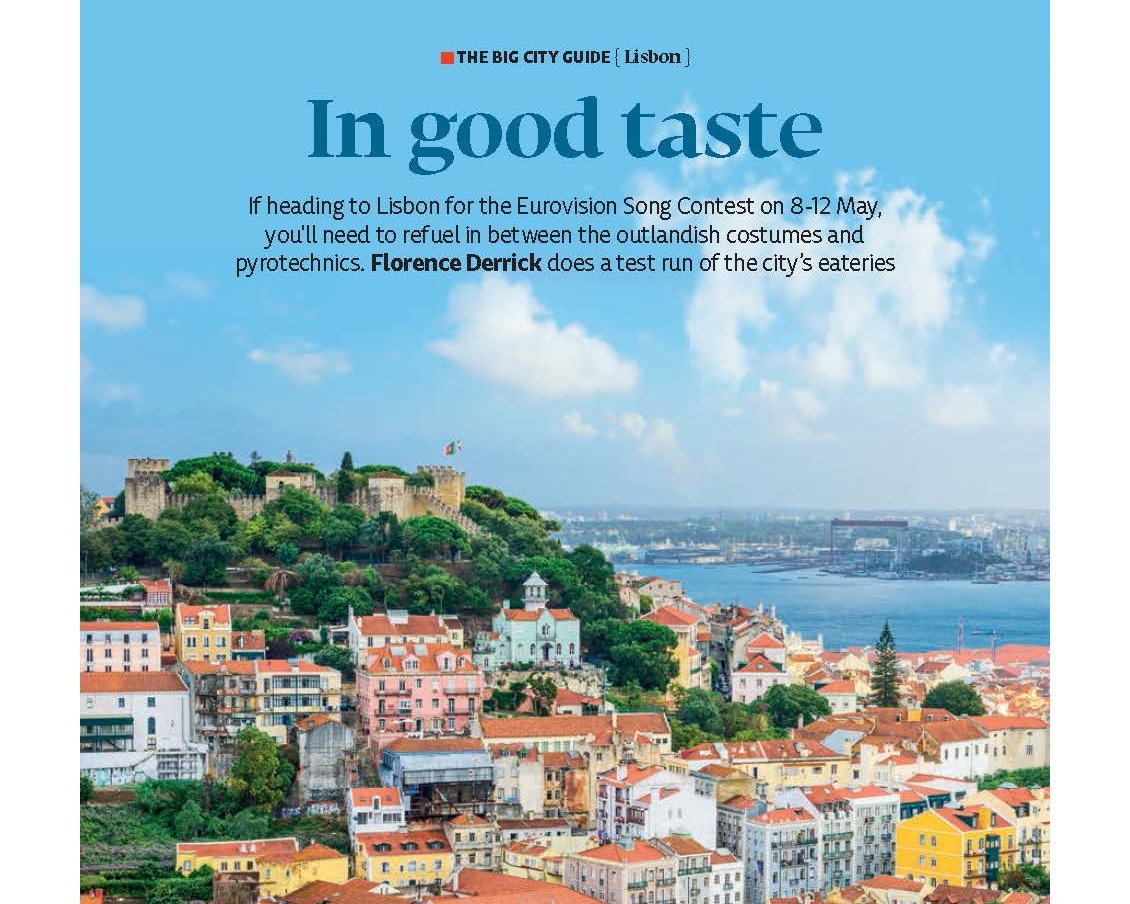I’ve come to the Portuguese capital on a pilgrimage: to worship at the altar of Pastéis de Belém, maker of the city’s original native custard tart, pastel de nata. Following a secret recipe that dates back to 1837, it’s been passed down through five generations since and is so fiercely coveted that only three chefs in the world know the ingredients – the same chefs churning out thousands of the cups of creamy heavenliness each day to disciples like myself.
But when I touch down, stormy weather has closed off the Belém district, to the west of the city centre – so my foodie odyssey starts closer in, at the Mercado da Ribeira. The Time Out-curated food market in the newly trendy Cais do Sodré quarter is a sunlit hive of Lisbon’s 40 top chefs offering budget versions of their wares. After a lap of the ground floor – a hall of long wooden tables crammed with diners tucking into bacalhau salted cod, octopus croquetes or handmade pizza, bought from the surrounding stands and sloshed back with a Super Bock lager – I find what I’m looking for. The stall from high-profile young chef Henrique Sá Pessoa is dishing out bifana sandwiches bursting open with thick, juicy slabs of suckling pig, glazed crackling crunching between meat juice-soaked bread.
“I love bifana with tender Alentejo pork fried in olive oil and garlic,” divulges Sá Pessoa. “You can marinate it in a traditional garlic, white wine and red pepper-paste sauce, but I play on the traditional recipe using different cuts of pork, sauces and dressings.”
Before I know it, back at the Palacio Belmonte hotel – an intimate 10-suite palace, silent save for the coos of peacocks in the next-door São Jorge Castle – it’s dinnertime at its innovative on-site restaurant, Leopold. The tasting menu’s eight, deftly prepared courses combine native ingredients with ambitious craft: cured egg yolk sprinkled with crunchy buckwheat and three varieties of Algarve samphire; seaweed salad mopped up with sourdough bread smothered in ewe’s milk butter; an unusual dessert of puréed banana covered in cinnamon and flakes of tangy cheese. It’s a total game-changer.
I spend the next morning on a brisk, hilly walk to the Feira da Ladra – a sprawling flea market held since the 12th century in the Alfama district’s Campo Santa Clara square. Usually, I’d be drawn magpie-like to the secondhand jewellery, antique furnishings and vintage clothes laid out on blankets on the cobbles. But it’s nearing lunchtime and I’m gearing up to try another of Lisbon’s signature dishes: bacalhau cod. If there’s one place to do it, it’s A Casa do Bacalhau, where 90% of the menu is dedicated to the fish. Cod isn’t native to Portugal, but became a staple for the country’s navy in the 15th century during its exploration of Newfoundland. The Portuguese never looked back and there’s said to be a bacalhau recipe for every day of the year. I vow to try as many as I can.
The meal kick-starts with the restaurant’s renowned pataniscas fritters, which were named Lisbon’s best at 2017’s Fish and Flavours festival. They’re crisp and nongreasy, with large flakes of cod standing out from the egg, flour and parsley batter that they’re encased in. But the signature bacalhau à brás is the must-order item: a tower of shredded salt cod, onions and fried-potato matchsticks packed together with scrambled egg and topped with briny black olives. Hearty and flavoured by the sea, it’s no wonder that this is Lisbon’s soul food, originating in the ancient Bairro Alto quarter near the port. Now the city’s nightlife hub, it’s where I head at sundown.
I couldn’t go on a foodie pilgrimage to Lisbon without getting acquainted with José Avillez, whose Michelin-starred Belcanto restaurant is consistently rated among the city’s finest. But I’m at his more under-the-radar Beco Cabaret Gourmet, a 1920s-inspired speakeasy lit by low table lamps and with a mural of a topless Dita Von Teese on the brick wall behind the shiny bar. Everything is designed to appeal to the senses. “The pleasure of eating is similar to other pleasures of fun and entertainment,” Avillez explains to me. “You eat some courses with your hands: we bring sensuality into the menu, too.”
As performers parade between the tables, I feast on ox tail so tender it almost melts into its potato puree bed; the biggest prawn I’ve seen this side of the Atlantic, perched atop a creamy swirl of tagliatelle; and strips of bread dipped in a pot of rich, truffle-infused egg yolk. The show carries on until 2am, when we spill out onto the pavement to find the Bairro Alto is only just warming up.
The next morning, only one thing can clear away the cobwebs. With sunshine now bouncing off the houses’ terracotta roofs and white facades, nothing can stop me hopping on the tram to the white and blue-tiled Pastéis de Belém. It was worth the wait. The tart arrives warm, with a slightly runny, not-too-sweet custard filling poured into crisp, flaky pastry. I pop my head into the kitchen, keen to know more, and am shooed away. But belly-full once again, I leave Lisbon in a borderline ecstatic state. I don’t need to know the recipe to have faith – which is just as well.
